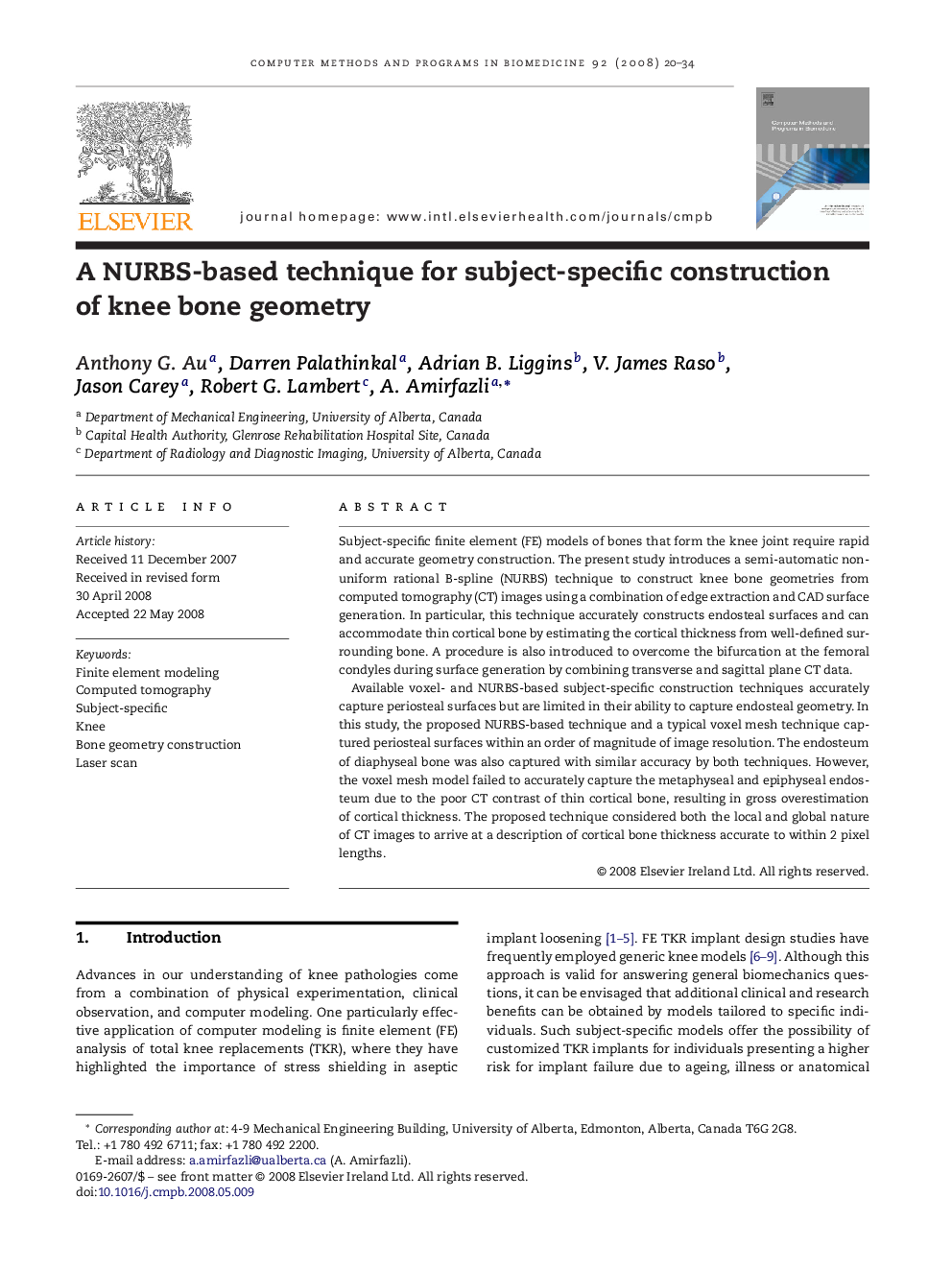| Article ID | Journal | Published Year | Pages | File Type |
|---|---|---|---|---|
| 468150 | Computer Methods and Programs in Biomedicine | 2008 | 15 Pages |
Subject-specific finite element (FE) models of bones that form the knee joint require rapid and accurate geometry construction. The present study introduces a semi-automatic non-uniform rational B-spline (NURBS) technique to construct knee bone geometries from computed tomography (CT) images using a combination of edge extraction and CAD surface generation. In particular, this technique accurately constructs endosteal surfaces and can accommodate thin cortical bone by estimating the cortical thickness from well-defined surrounding bone. A procedure is also introduced to overcome the bifurcation at the femoral condyles during surface generation by combining transverse and sagittal plane CT data.Available voxel- and NURBS-based subject-specific construction techniques accurately capture periosteal surfaces but are limited in their ability to capture endosteal geometry. In this study, the proposed NURBS-based technique and a typical voxel mesh technique captured periosteal surfaces within an order of magnitude of image resolution. The endosteum of diaphyseal bone was also captured with similar accuracy by both techniques. However, the voxel mesh model failed to accurately capture the metaphyseal and epiphyseal endosteum due to the poor CT contrast of thin cortical bone, resulting in gross overestimation of cortical thickness. The proposed technique considered both the local and global nature of CT images to arrive at a description of cortical bone thickness accurate to within 2 pixel lengths.
